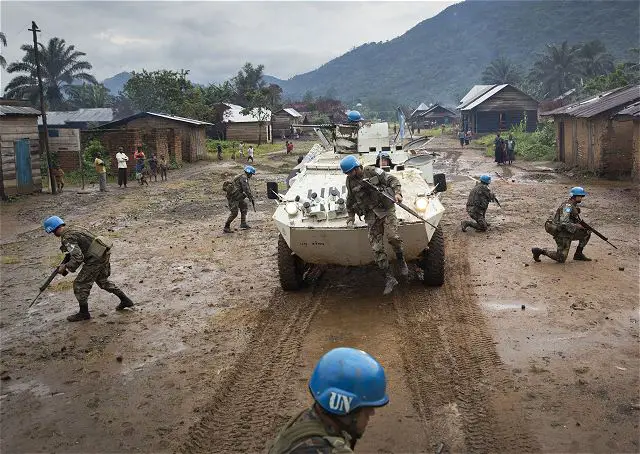With the release of Spectre Miniatures modern African's due any day, my thoughts turn to some suitable opposition for them.
It's fair to say some countries have more than their fair share of bad luck amd misfortune, Serria Leone has to be top of that list as the latest ebola outbreak is testiment.
Back in the early 90's the country was ravaged by civil war, UN forces were deployed to assist the government with disarmament, demobilization and reintegration, I am not keen on refighting the actual war, the number of atrocities carried out by both sides is truely shocking, but the history of the war makes for certain elements to be lifted into the fictional setting of Zikanga far more palatable from a wargames perspective.
Gripping Beast do a great range of Marines and Rangers for Somalia, but they also double up as many of the African Nations (ECOMOG) who were sent into Sierra Leone and the Congo to restore order and good governence.
It's fair to say some countries have more than their fair share of bad luck amd misfortune, Serria Leone has to be top of that list as the latest ebola outbreak is testiment.
Back in the early 90's the country was ravaged by civil war, UN forces were deployed to assist the government with disarmament, demobilization and reintegration, I am not keen on refighting the actual war, the number of atrocities carried out by both sides is truely shocking, but the history of the war makes for certain elements to be lifted into the fictional setting of Zikanga far more palatable from a wargames perspective.
Gripping Beast do a great range of Marines and Rangers for Somalia, but they also double up as many of the African Nations (ECOMOG) who were sent into Sierra Leone and the Congo to restore order and good governence.
Now the real thing.
For those interested in the real war it began March 1991 when the Revolutionary United Front (RUF), with support from the special forces of Charles Taylor’s National Patriotic Front of Liberia (NPFL), intervened in Sierra Leone in an attempt to overthrow the Joseph Momoh government.
During
the first year of the war, the RUF took control of large
swathes of territory, which were
rich in diamonds. The government's ineffective response to the
RUF, and the disruption in diamond production, precipitated a
military coup d'état in April 1992 by the National Provisional Ruling
Council (NPRC). By the end of 1993, the Sierra Leone Army (SLA) had
succeeded in pushing the RUF rebels back to the Liberian border
In 1995, Executive Outcomes a private military company, was hired to repel
the RUF from Sierra Leone the retreating RUF signed the Abidjan Peace Accord.
After 5 years of peace in
May 1997 a group of disgruntled SLA officers staged a further coup and
established the Armed Forces Revolutionary Council (AFRC) as the new
government of Sierra Leone.
The RUF joined with the AFRC to capture Freetown with little
resistance. International condemnation at the overturning of the civilian government resulted in ECOMOG
forces from neighbouring countries entering the country retaking Freetown on behalf of the government, but
they found the outlying regions more difficult to pacify.
In
January 1999, world leaders intervened diplomatically to promote
negotiations between the RUF and the government. The Lome Peace Accord,
signed on 27 March 1999, was the result. Lome gave Foday Sankoh,
the commander of the RUF, the vice presidency and control of Sierra
Leone's diamond mines in return for a cessation of the fighting and the
deployment of a UN peacekeeping force to monitor
the disarmament process.
RUF compliance with the disarmament process
was inconsistent and sluggish, and by May 2000, the rebels were
advancing again upon Freetown.
As the UN mission began to fail the United Kingdom declared its
intention to intervene in the former colony in an attempt to support
the weak government of President Ahmad Tejan Kabbah. With help from a
renewed UN mandate and Guinean air support, the British Operation
Palliser finally defeated the RUF, taking control of Freetown. On 18
January 2002, President Kabbah declared the Sierra Leone Civil War over.






Those look really good. I was living in Nigeria at the time and the Nigerian component of the ECOMOG forces were regularly looting stuff from Sierra Leone and shipping back into Lagos. Hardly conducive to peace keeping but could make for a fun scenario...
ReplyDeleteCracking stuff Stuart.
ReplyDelete